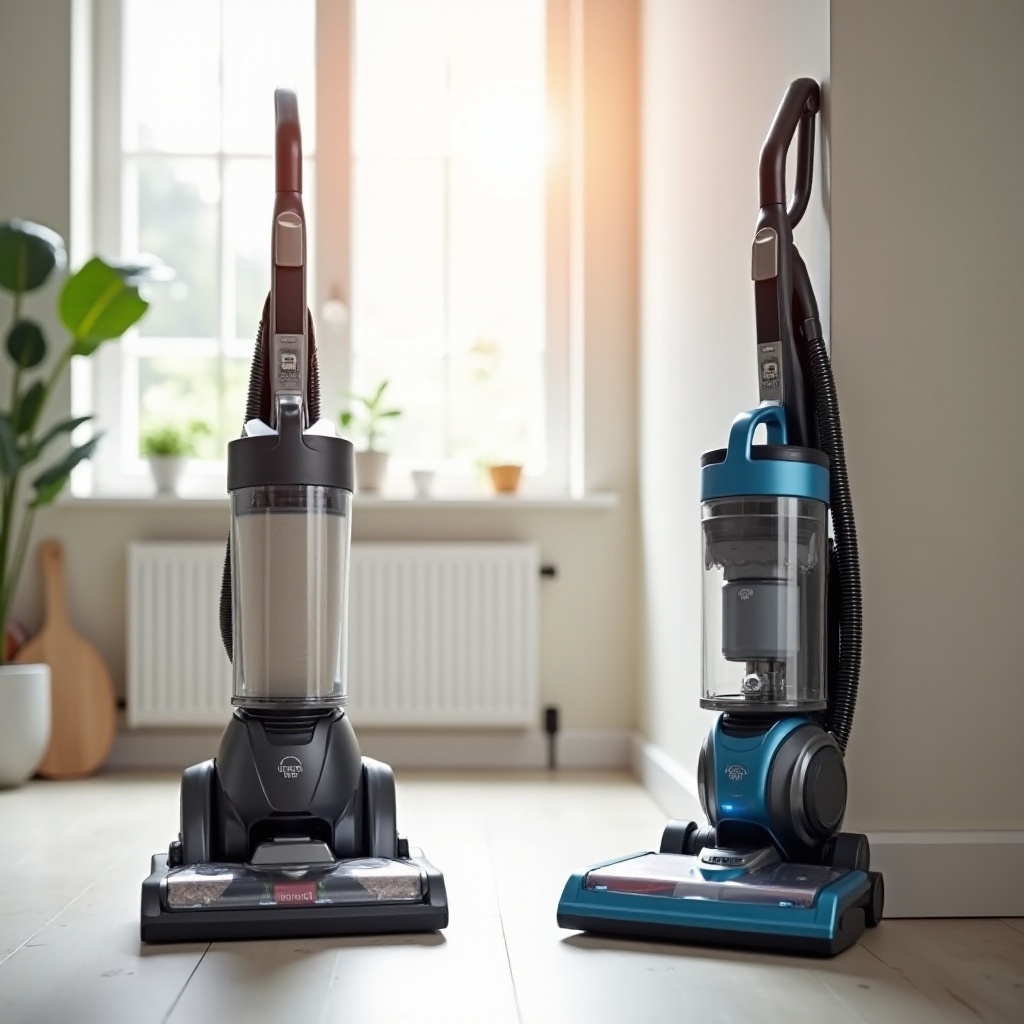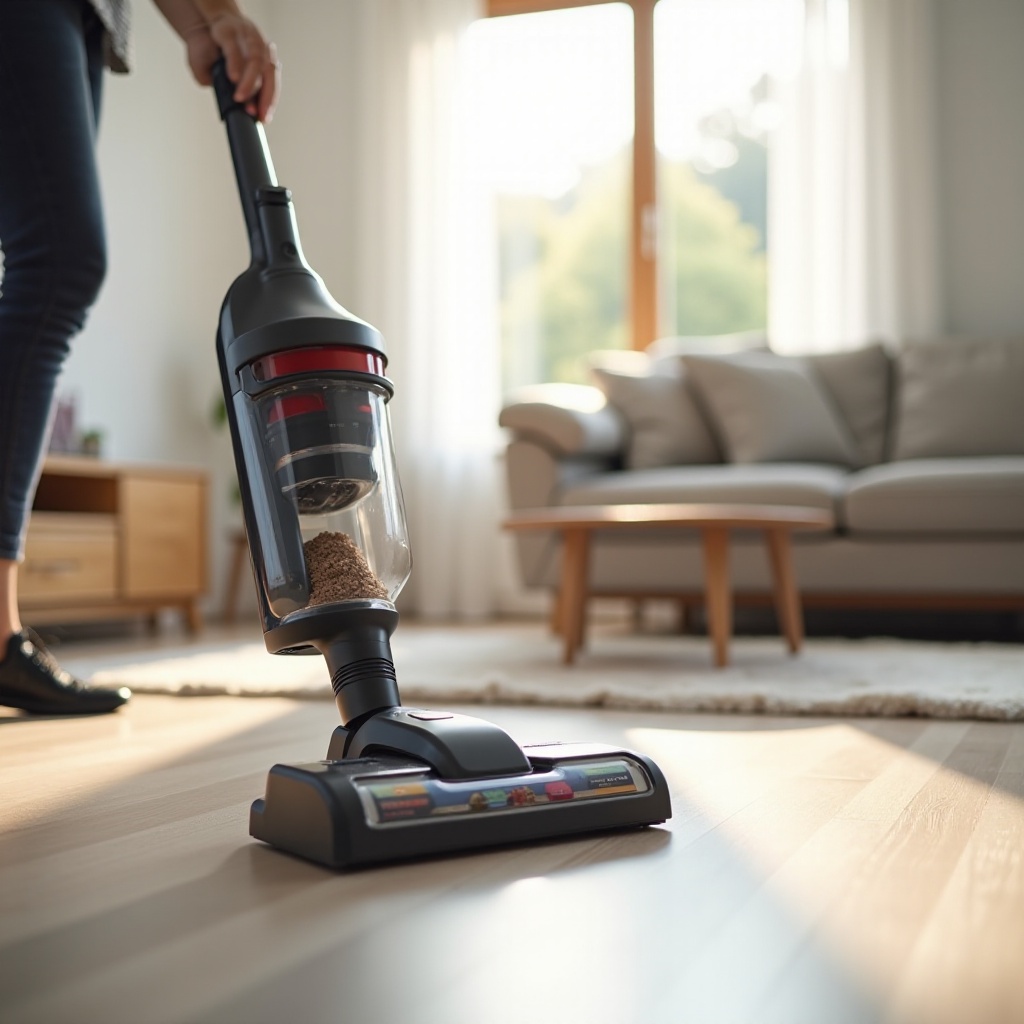Introduction
Choosing between bagged and bagless vacuum cleaners can be perplexing. With numerous options flooding the market, it’s essential to know the fundamental differences to make an informed choice. This guide aims to elucidate the workings, advantages, and disadvantages of both types. By understanding these aspects, you can decide which vacuum cleaner best meets your needs and preferences.

Overview of Bagged Vacuum Cleaners
Bagged vacuum cleaners use replaceable bags to collect dust and debris. As the vacuum operates, air carrying dirt particles gets sucked into these bags. The bag acts as a filter, allowing clean air to escape while trapping the dust inside. When the bag is full, it needs to be replaced.
Types of Bagged Vacuum Cleaners
There are several types of bagged vacuum cleaners:
1. Upright Vacuums: Ideal for cleaning large carpeted areas.
2. Canister Vacuums: Suitable for versatile cleaning jobs, including hard-to-reach areas.
3. Handheld Vacuums: Best for quick clean-ups and small spaces.
4. Stick Vacuums: Lightweight and easy to maneuver, perfect for quick jobs.
Pros of Bagged Vacuum Cleaners
- Efficiency: The bags are designed to trap fine dust particles, making them highly efficient.
- Hygiene: When you replace the bag, you do not come into contact with the dust.
- Allergy-Friendly: Ideal for people with allergies as they trap allergens effectively.
- Low Maintenance: Rarely require internal cleaning since the dirt is contained within the bag.
Cons of Bagged Vacuum Cleaners
- Ongoing Costs: You need to purchase replacement bags regularly, which can add up over time.
- Decreased Performance: As the bag fills, the vacuum’s performance can decline.
- Hassle: Remembering to replace the bag can be bothersome.
- Environmental Impact: Disposable bags contribute to landfill waste.

Overview of Bagless Vacuum Cleaners
In contrast to bagged models, bagless vacuum cleaners use a dirt cup or chamber to collect dust and debris. These vacuums typically employ cyclonic technology to spin dust particles away from the air, depositing them into the chamber. This dirt container can be emptied and reused, eliminating the need for replacement bags.
Types of Bagless Vacuum Cleaners
You can find several types of bagless vacuum cleaners:
1. Upright Vacuums: Effective for deep carpet cleaning.
2. Canister Vacuums: Great for versatile, multi-surface cleaning.
3. Handheld Vacuums: Perfect for small tasks and car interiors.
4. Stick Vacuums: Convenient for quick clean-ups and everyday use.
Pros of Bagless Vacuum Cleaners
- Cost-Effective: No need to continually buy replacement bags.
- Consistent Performance: Suction power remains consistent, even as the dirt cup fills.
- Environment-Friendly: Fewer disposable components reduce waste.
- Transparent Chambers: You can see when the chamber needs to be emptied.
Cons of Bagless Vacuum Cleaners
- Dust Exposure: Emptying the chamber can release dust back into the air.
- Higher Maintenance: Filters need regular cleaning or replacement.
- Messier: Emptying the dirt cup can be more complicated and messier.
- Noise Level: Generally, bagless vacuums tend to be noisier.

Key Differences Between Bagged and Bagless Vacuum Cleaners
Both types offer similar suction power, but their efficiency can vary. Bagged vacuums often perform better as they fill up compared to bagless ones, which can lose some suction as the dirt chamber fills. However, advanced cyclonic technology in bagless models bridges this gap effectively.
When it comes to maintenance, bagged vacuum cleaners are low-maintenance, with the main task being bag replacement. In contrast, bagless vacuums require more frequent attention. You need to empty the dirt chamber regularly and periodically clean or replace filters to ensure optimal performance.
In terms of long-term costs, bagged vacuums incur ongoing costs for replacement bags, which can accumulate over time. On the other hand, bagless vacuums don’t require bag purchases but may need filter replacements. In the long run, bagless models might be more cost-effective, depending on the frequency of filter replacements.
Factors to Consider
Household Needs
Think about your home’s size, flooring types, and cleaning needs. Larger homes with extensive carpeting may benefit from the robust performance of bagged vacuums. Conversely, smaller spaces with mixed flooring may find bagless vacuums more versatile.
Allergy Considerations
For allergy sufferers, bagged vacuums are usually the better choice. They trap and contain allergens effectively, reducing exposure when emptying. Bagless models, with their reusable chambers, can release dust back into the air, potentially aggravating allergies.
Frequency of Use and Maintenance
Bagless vacuums require regular maintenance to maintain optimal performance, including emptying the dirt chamber and cleaning filters. Bagged models are generally more hands-off, needing less frequent maintenance. Consider how much time and effort you’re willing to invest in upkeep.
Budget Considerations
Your budget plays a crucial role. Initial costs may be comparable, but bagged vacuums incur ongoing bag replacement expenses. Bagless vacuums, while potentially more cost-effective long-term, necessitate filter replacements and regular maintenance, which could balance the cost scale over time.
Conclusion
Choosing between bagged and bagless vacuum cleaners depends on your specific needs and preferences. Bagged models offer superior hygiene and are allergy-friendly but come with ongoing costs. Bagless models are cost-effective and environmentally friendly but require regular maintenance. Evaluate your household requirements, allergy concerns, and budget constraints to make an informed decision.
Frequently Asked Questions
Are bagless vacuums better than bagged for people with allergies?
No, bagged vacuums are generally better for people with allergies. They effectively trap dust and allergens, reducing exposure when emptying.
How often do I need to replace the filters in a bagless vacuum cleaner?
Typically, filters in a bagless vacuum need to be replaced every 3-6 months, depending on usage and manufacturer recommendations.
Which type of vacuum cleaner is more cost-effective in the long run?
Bagless vacuum cleaners are usually more cost-effective over time due to the absence of replacement bag costs, though filter replacements and maintenance should be factored in.
